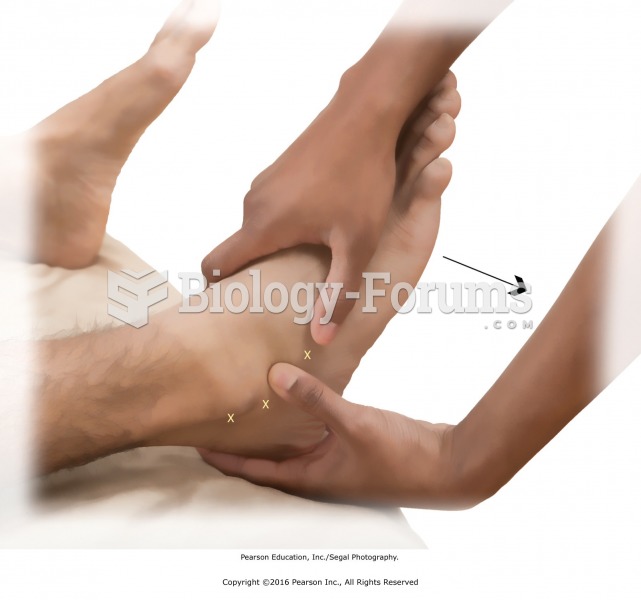This topic contains a solution. Click here to go to the answer
|
|
|
Did you know?
Signs and symptoms of a drug overdose include losing consciousness, fever or sweating, breathing problems, abnormal pulse, and changes in skin color.
Did you know?
Patients who cannot swallow may receive nutrition via a parenteral route—usually, a catheter is inserted through the chest into a large vein going into the heart.
Did you know?
After 5 years of being diagnosed with rheumatoid arthritis, one every three patients will no longer be able to work.
Did you know?
There are more nerve cells in one human brain than there are stars in the Milky Way.
Did you know?
The first documented use of surgical anesthesia in the United States was in Connecticut in 1844.
 Slide along the bottom of the foot with the fist. Apply from the ball of the foot to the heel. Use ...
Slide along the bottom of the foot with the fist. Apply from the ball of the foot to the heel. Use ...
 Transverse friction to the plantar aponeurosis with the thumb. Brace the foot with one hand while ...
Transverse friction to the plantar aponeurosis with the thumb. Brace the foot with one hand while ...





